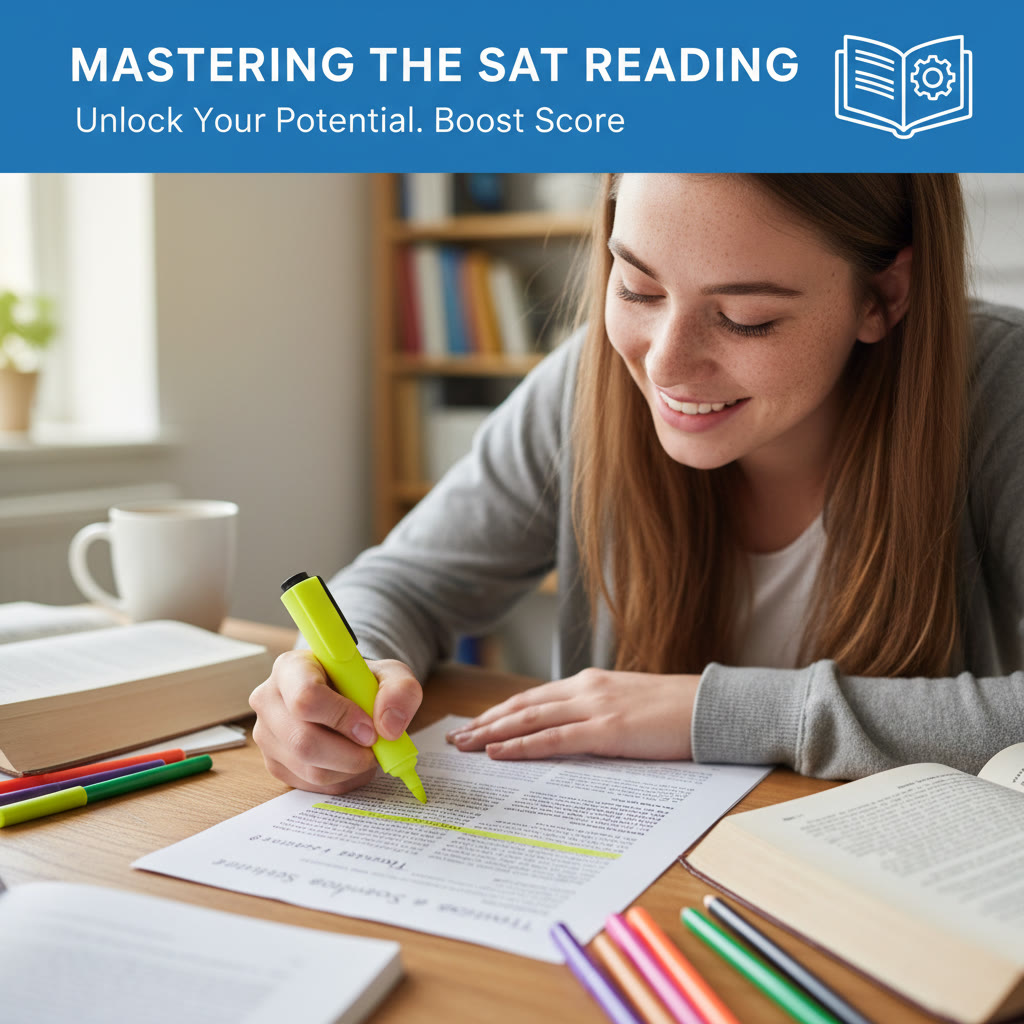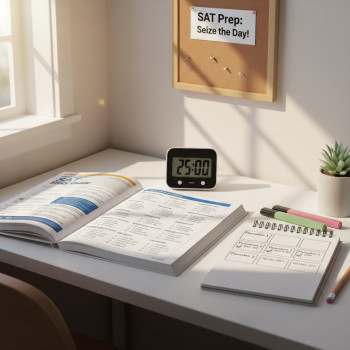Why Annotation Matters More Than You Think
If the SAT Reading Test feels like a race against a ticking clock, annotation is the comfortable pair of running shoes you didn’t know you needed. It’s not about scribbling randomly or defacing a passage; annotation is a focused, strategic way to capture the author’s moves, spot evidence fast, and connect questions to the exact lines that answer them. In short: smart annotation turns passive reading into active problem-solving.
A quick reality check
The Reading Test is 65 minutes long with 52 questions split across five passages (or sets of passages). That gives you roughly 13 minutes per passage to read, annotate, and answer questions. Without a plan, those 13 minutes evaporate into confusion. With annotation, you spend a few targeted minutes creating a mental map that saves time and reduces second-guessing when questions ask for evidence, tone, or function.

What Good Annotation Actually Looks Like
Good annotation is economical and intentional. It highlights structure, marks claims and evidence, tracks shifts in tone or perspective, and flags anything unusual or confusing. It is not a line-by-line translation of the passage or a stream of consciousness. The goal: leave behind a readable skeleton so when a question mentions “the passage,” you know exactly where the author made that point.
Core elements of effective annotation
- Label the main idea of each paragraph in a few words.
- Underline or bracket thesis sentences and key claims.
- Circle transition words that signal contrast, cause, or addition.
- Bracket evidence and note whether it’s data, anecdote, example, or concession.
- Flag confusing sections to return to after answering easier questions.
Step-by-Step Annotation Routine You Can Use Every Test Day
Build a repeatable routine so annotation becomes second nature. Here’s a simple, high-yield sequence that fits the SAT timing model:
- Step 1 — Quick preview (20–30 seconds): Read the passage title (if there is one) and the first and last paragraph topic sentences. This gives a fast orientation.
- Step 2 — Active read with minimal marking (2–3 minutes): Read the passage, underlining main claims, bracketing evidence, and writing a one- to three-word label for each paragraph in the margin.
- Step 3 — Mark shifts (15–20 seconds): Circle or note transition words like however, yet, consequently, on the other hand — these are gold for inference and function questions.
- Step 4 — Flag key lines for evidence (10–15 seconds): Put a star or number next to lines that are likely to be referenced by questions.
- Step 5 — Answer questions by referring back (remaining ~9–10 minutes): Use your labels and marks to find evidence quickly. For Evidence-Based questions, point to the exact bracketed line or sentence that supports your answer.
Why this timing works
Spending 3–4 minutes up front to annotate saves multiple short lookups later. Each time you don’t have to re-read a full paragraph, you reclaim 10–30 seconds — those savings add up across five passages. The routine also reduces the mental load of holding ideas in working memory because your margin notes externalize them.
Annotation Symbols and What They Mean
Create a tiny, consistent shorthand so your marks are meaningful under pressure. Here’s a starter set that students find comfortable and fast:
- Underline = main claim or important phrase
- Bracket [ ] = evidence, example, data
- Star * = likely referenced by questions
- Question mark ? = confusing or needs a second look
- P = purpose or function (why this sentence is here)
- T = tone or attitude
Keep it tiny and consistent
These symbols work because they are quick and unambiguous. Don’t invent a flurry of idiosyncratic signs — you’ll waste time figuring out what your marks mean. Practice with the same set of symbols so they become muscle memory.
How Annotation Helps Different Question Types
The SAT throws a variety of reading questions at you: main idea, detail, inference, function, vocabulary-in-context, and most importantly, evidence-based paired questions where one question asks for an answer and the next asks you to identify the line that supports it. Annotation gives you a direct path to the lines the test expects you to use.
Main idea and thesis questions
Labels for each paragraph and underlined thesis statements make it fast to summarize the whole passage without hunting through details. If you’ve labeled the intro and conclusion, you already have the bones of the main idea.
Detail and evidence questions
Bracketed passages and starred lines point you to the exact sentence the test uses as evidence. Instead of re-reading a paragraph to find a detail, your brackets isolate it immediately.
Inference and function questions
Marking transitions and noting the author’s purpose (P) for key sentences helps with these higher-level questions. If a question asks why the author mentioned an example, your “P” notes identify whether it’s to illustrate, to contrast, or to qualify.
Table: Annotation Techniques, Purpose, Example
| Technique | Purpose | Quick Example |
|---|---|---|
| Label paragraphs | Summarize role and find main idea fast | “Intro—claim,” “Para 2—evidence” |
| Bracket evidence | Pinpoint support for detail/evidence questions | “[Study of 200 students found…]” |
| Circle transitions | Spot shifts in argument or contrast | “however”, “on the other hand” |
| Star key lines | Quick reference for paired evidence questions | “*This demonstrates…” |
| Note tone (T) | Answer attitude and authorial voice questions | “T = ironic/critical/sympathetic” |
Practical Examples — How to Annotate a Short Passage
Imagine a short passage about urban beekeeping that opens with a surprising statistic and then presents an environmental argument. Here is how your annotation might look in practice:
- Paragraph 1 label: “Intro—statistic; cool fact; claim: cities help bees”
- Bracket the sentence with the statistic: “[City rooftops host 40% more forage than surrounding farms.]”
- Circle transition when the author shifts to limitations: “However, not all cities can sustain colonies…”
- Star a line that gives a strong claim used later in a question: “*Garden policies are the real barrier.”
- In margin, write T = optimistic but cautious

With these marks, a question that asks “Which choice best describes the author’s attitude?” becomes a one-glance lookup at your tone note. A paired evidence question that asks which line supports the claim about rooftop forage leads you straight to the bracketed statistic.
Common Annotation Mistakes and How to Avoid Them
- Over-annotating: Writing a paragraph of notes defeats the purpose. Keep labels to a word or two and marks minimal.
- Writing full paraphrases: If you’re rewriting sentences, you’re reading slow. Use concise labels and symbols instead.
- Ignoring structure: Not marking paragraph roles leaves you searching. Label the function: claim, evidence, concession, counterargument.
- Inconsistent symbols: If your marks don’t mean the same thing every time, they confuse more than help. Pick a system and stick with it.
Practice drill to fix mistakes
Time yourself on short passages: annotate for exactly three minutes, then answer questions. Afterward, check whether your marks helped. If you rewound to re-read often, tighten your annotations: fewer marks, smarter placement.
How to Use Annotation in the Evidence-Based Questions
Evidence-based questions are a hallmark of the SAT: the test asks for a primary answer and then requires you to pick which line supports that answer. Your annotations are the secret weapon here because they locates the support quickly.
- When you choose an answer to the primary question, immediately scan your starred lines to find direct support.
- If you didn’t star the right line, look for brackets or the paragraph label that corresponds to the content of your answer.
- Use your margin notes for quick cross-checks — do the label and the evidence match the logic of the answer?
When Annotation Might Slow You Down (and What to Do)
Annotation isn’t always the fastest route. If you’re dealing with a very short passage or a passage that is extremely straightforward, heavy annotation could be wasteful. The solution: adapt. For short, clear passages, a single line summary in the margin and a star on the evidence is often enough.
Adaptive annotation rule
Match your level of marking to passage length and complexity. Fewer marks for simple texts, more structure for dense argument passages or paired passages where evidence jumps between paragraphs.
Practice Plans: Turn Annotation into Skill
Practice is where annotation becomes fast and automatic. Here are two-week and six-week practice plans depending on how much prep time you have.
- Two-week sprint (daily 45–60 minutes):
- Days 1–3: Learn and lock a symbol set; annotate three passages a day focusing on accuracy of marks.
- Days 4–7: Time the read-annotate-answer routine; aim for 3–4 minute annotation and under 13 total minutes per passage.
- Days 8–14: Full timed sections; analyze mistakes and refine what you mark.
- Six-week build (4–5 sessions/week, 60–90 minutes):
- Weeks 1–2: Fundamentals, symbols, and paragraph labeling.
- Weeks 3–4: Focus on inference and evidence questions; practice paired-question strategy.
- Weeks 5–6: Full tests every weekend with targeted review of annotation efficiency.
How tutoring can accelerate this
Personal feedback speeds progress. Working with a tutor who observes how you annotate and then suggests micro-adjustments saves weeks of trial-and-error. Sparkl’s personalized tutoring and benefits can fit naturally here: a tutor can model best-practice annotations in real time, set tailored study plans to strengthen weak areas, provide 1-on-1 guidance, and use AI-driven insights to track which question types cost you time. Those small, focused corrections often produce the biggest gains.
Materials and Tools for Effective Annotation
Use what’s allowed on test day: two No. 2 pencils, an approved test booklet for making notes on passages (you can write in it), and a jotted key of symbols on a scratch paper if that helps you warm up before the section. On practice days, experiment with highlighters and colored pens to see how visual cues affect your speed — but simplify on test day to pencil marks you know well.
Real-World Comparison: Why Annotation Mirrors Strong Note-Taking
Think of annotation like taking minutes in a meeting: you don’t copy every word, you capture decisions, action items, and the reasoning behind them. Similarly, annotation captures claims, evidence, and rhetorical moves. This makes retrieval fast and accurate — just what you need when the clock is on.
Final Checklist Before Test Day
- You have one consistent set of symbols you can use automatically.
- You’ve practiced the timed routine until it feels natural.
- You know how to adapt annotation density to passage length.
- You’ve practiced evidence-pair questions with your annotations as the primary lookup method.
- You’ve done at least a few sessions with guided feedback — whether from a tutor or a teacher — to catch blind spots.
A last word on confidence
Annotation isn’t a magic spell — it’s a skill that turns the chaos of a densely written passage into a tidy reference system. The first few times you use it under timed conditions, it may feel awkward. Stick with it. With consistent practice, annotation becomes not only faster but calming: when you write the paragraph labels and star the lines, you’ve put a map on the paper, and maps reduce anxiety.
Closing Thought: Small Marks, Big Results
In a high-pressure environment like the SAT, efficiency and clarity are your allies. The marks you make on the page should be small but meaningful. They should point to logic, expose evidence, and capture tone. When practiced consistently, annotation does more than help with questions — it changes the way you read, turning distraction into argument awareness and confusion into evidence-driven certainty.
If you want to turn annotation into a dependable advantage, pair disciplined practice with targeted feedback. Tutors can accelerate that process by modeling annotations, adjusting your routine, and offering AI-driven insights that show exactly which question types cost you time. Sparkl’s personalized tutoring and benefits—1-on-1 guidance, tailored study plans, expert tutors, AI-driven insights—fit seamlessly into that approach, helping you practice smarter, not just harder.
So pick up your pencil, pick a tiny symbol set you’ll stick with, and start treating every passage as a live argument waiting to be mapped. The page will no longer be an obstacle; it will be a roadmap to the correct answers.














No Comments
Leave a comment Cancel